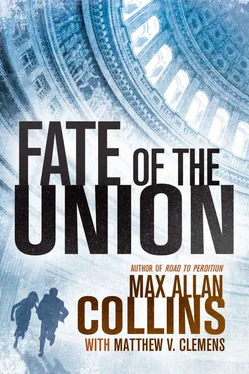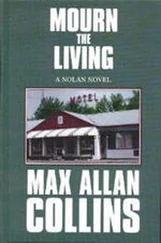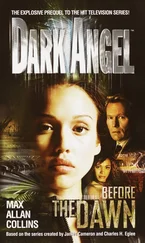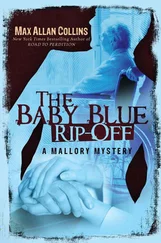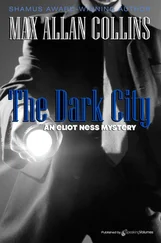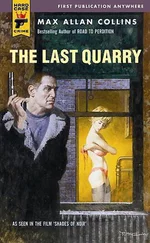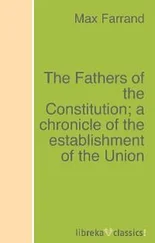He hadn’t bothered acquiring an accelerant, because he’d seen one in the office last night, when he started his search by looking in the file cabinet. Bryson must have been a lush because the guy kept a bottle of bourbon in the bottom drawer.
That would do fine.
And with all the flammable stuff in here anyway, sprinkler system and smoke alarms down, it’d be tinderbox time.
Back in Bryson’s inner office, he filled the wastebasket with paper, which he then doused with bourbon. He went to the desk and opened drawers and sprinkled bourbon on everything. Same for the desktop. He noticed something a little out of place — an insulated coffee mug with the Metro DC police badge logo. Probably left behind by that cop on guard last night.
In the outer office, keeping down low — that big window again — he filled that wastebasket, too. He splashed that with bourbon, as well as a stack of magazines on a little end table by the waiting-area chairs.
Returning to Bryson’s inner office, he splashed what was left of the bourbon onto a wall. Then he pulled out his Air America lighter and went around lighting little fires, wastebasket, desktop, top drawer. He was heading toward the door to the outer office when the uniformed cop came through.
Not fucking again!
No weapon in his hands. He was bundled up for the cold and his eyes had gone immediately to the desk, and Carpenter knew. Last night’s cop on the door — he’d left his coffee cup here, all right. Probably in his thirties, kind of heavy, cheeks rosy from the cold but maybe rosy anyway. His hand went toward his holstered weapon and Carpenter hurled the coffee cup at him, hitting him in the forehead. The cop winced and by then Carpenter had his .45 out of his parka pocket.
“Hands where I can see them,” Carpenter said.
Around them the little fires crackled and smoked and popped.
The cop held up his hands, swallowed. “What is this, anyway?”
“This is where you turn around and face that wall. Do it.”
Like a big blundering beast, the heavily winterized cop turned to the wall. Smoke was getting thick now, each little fire sending its fumes to meet other fumes. The desktop was entirely consumed by dancing orange and blue.
“I don’t care about you,” the cop said. “All I want is to get the fire department out here, protect the people in these stores. There’s a back door. Use it. Go!”
Carpenter was holding his breath, smoke thickening.
But he let some breath out as he said, “I don’t care about you, either.”
And put two holes in the back of the cop’s head.
“Everyone wants to go to heaven, but no one wants to die.”
Joe Louis, Heavyweight Champion of the World, 1937–1949. Section 7A, Grave 177, Arlington National Cemetery.
Patti Rogers, in a gray suit with a white blouse, stood before her assembled team in a small conference room, with a sixty-inch wall monitor looming behind her.
Joe Reeder, in a camel-hair sport coat with a light-blue shirt and navy-and-black striped tie, was the closest thing to casual in a room of FBI agents in suits. Immediately to Rogers’s right, Reeder sat next to Miguel Altuve (blue suit, darker blue tie) with the rest spread around the oblong table — attractive African American Anne Nichols, dark-haired handsome Jerry Bohannon, former college hoop star Reggie Wade, skeletal Trevor Ivanek, and of course resident cue ball Lucas Hardesy, who was more up to speed than the rest, having been the one who’d called Rogers to the Karma Sabich crime scene the day before.
Arrayed on the big flat screen were all seven of Chris Bryson’s SIM card photos, as well as a glamorous head shot of Karma Sabich, pulled from the website of the club where the transvestite had worked.
“I trust you all know Joe Reeder,” she said, “or at least know of him.”
Nods and murmured hellos from the team, a nod and murmured hello from the new face at the table.
Rogers made a slow scan of the faces looking up at her. “Did any of you ever meet Chris Bryson? Or even just hear of him?”
Head shakes and a few “No” responses.
She paced a few steps. “Does anybody know how a one-man strip mall security outfit could get ahead of us in our serial investigation?”
Silence.
Which finally was broken by Reeder.
“Agent Rogers,” he said, in that flat manner he used in public, “if I might respond?”
She nodded to him. “Certainly. For the record, Mr. Reeder has signed on with us as a consultant.”
“Pro bono,” he said with a slight smile. “I know Agent Rogers has provided you with the basics. But let me reiterate: Chris Bryson was a friend. And I need to make a point about him. He was ex — Secret Service, so he wasn’t just some storefront PI. He was also a Medal of Honor winner. He was as good as anybody in this room. So we don’t need to beat ourselves up about him getting out ahead of us.”
If anyone else had said that, Rogers would have felt undermined. But Reeder was right, both in what he said and in gently guiding her onto the right track with her people.
Reeder continued: “That someone took Chris out of the game, before he could do anything about it, is worth our careful consideration. My guess is that those photos don’t represent an investigation for a client. Working on something else, Chris tumbled onto a situation that got his Spidey senses tingling. So he took a few pictures.”
Roger gave Reeder a tiny gesture that told him to join her. He rose, came up and stood beside her. Without a word, they were now sharing leadership of the team.
The four field agents traded looks, understanding very well what had just happened. Everyone seemed focused, even calm, except maybe Miggie, a chronic fidgeter due to his jones for imported coffee.
Ivanek was looking past Rogers and Reeder. “Have we identified that building?” the behaviorist asked, nodding toward the screen.
“No,” Rogers said.
Bohannon, in a well-cut gray suit probably picked out by partner Wade, said, “Small factory of some sort. Job shop, maybe.”
“Whatever it is,” Miggie said, “it’s not in DC. I’ve got software searching for it in concentric circles. Bryson may have downloaded it from the web — he took screenshots of the obits to get the victim photos. I’m searching, but with so little to work with, it may be a while.”
Wade, typically stylish in a tailored dark-green suit, looming even when he was sitting down, asked, “And the black cube?”
“No idea,” Miggie said with a shrug. “Nothing around it to provide context or perspective. No clue how big it is, where it is, what it is.”
Lovely Nichols — in a dark-taupe suit with black V-neck blouse (an ensemble Rogers would never have risked) — asked the computer guru, “What about our blond boy there?”
“Photo’s from the side,” Miggie said, “at a distance — a shot Bryson grabbed on the street. Facial rec no help so far.”
Ivanek asked, “What’s the story on the transvestite?”
Rogers nodded at Hardesy, saying, “Luke, take that, would you? You made the connection.”
“You got it, boss,” he said.
The other team members goggled at each other — though the behaviorist only allowed himself an arched eyebrow — as they tried to process this unlikely exchange between a pair of coworkers who to date had been adversarial.
Hardesy said, “DeShawn Davis, twenty-four. Worked as a dancer at Les Girls under the stage name Karma Sabich. Lived in Arlington. Night before last, found dead by a friend. Double-tapped. Sound familiar?”
“Familiar,” Ivanek said, “but not familiar enough. However scant the profile we’ve developed, it doesn’t leave room for a transvestite victim.”
Читать дальше
